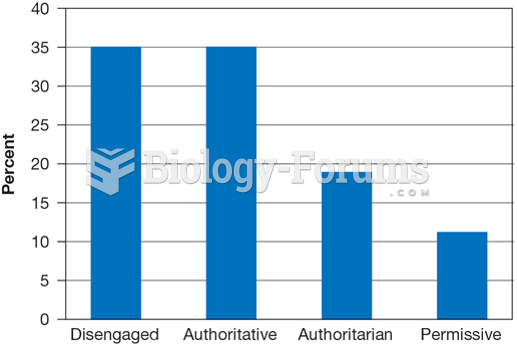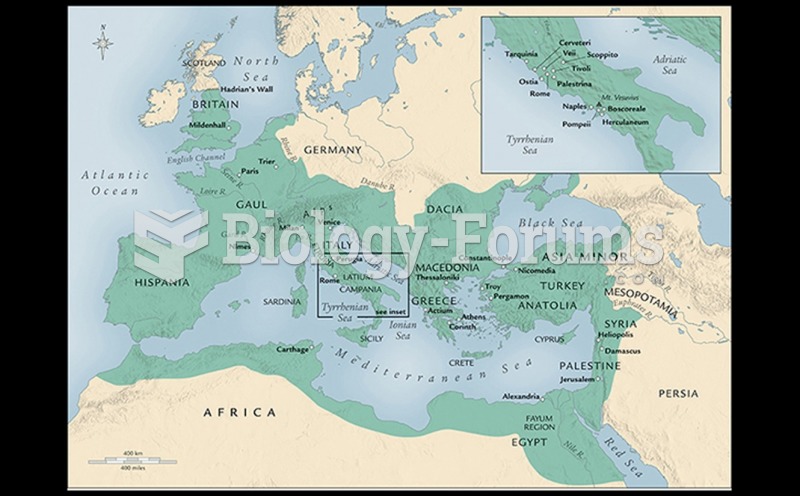|
|
|
More than 150,000 Americans killed by cardiovascular disease are younger than the age of 65 years.
More than 30% of American adults, and about 12% of children utilize health care approaches that were developed outside of conventional medicine.
People who have myopia, or nearsightedness, are not able to see objects at a distance but only up close. It occurs when the cornea is either curved too steeply, the eye is too long, or both. This condition is progressive and worsens with time. More than 100 million people in the United States are nearsighted, but only 20% of those are born with the condition. Diet, eye exercise, drug therapy, and corrective lenses can all help manage nearsightedness.
By definition, when a medication is administered intravenously, its bioavailability is 100%.
Oliver Wendell Holmes is credited with introducing the words "anesthesia" and "anesthetic" into the English language in 1846.







